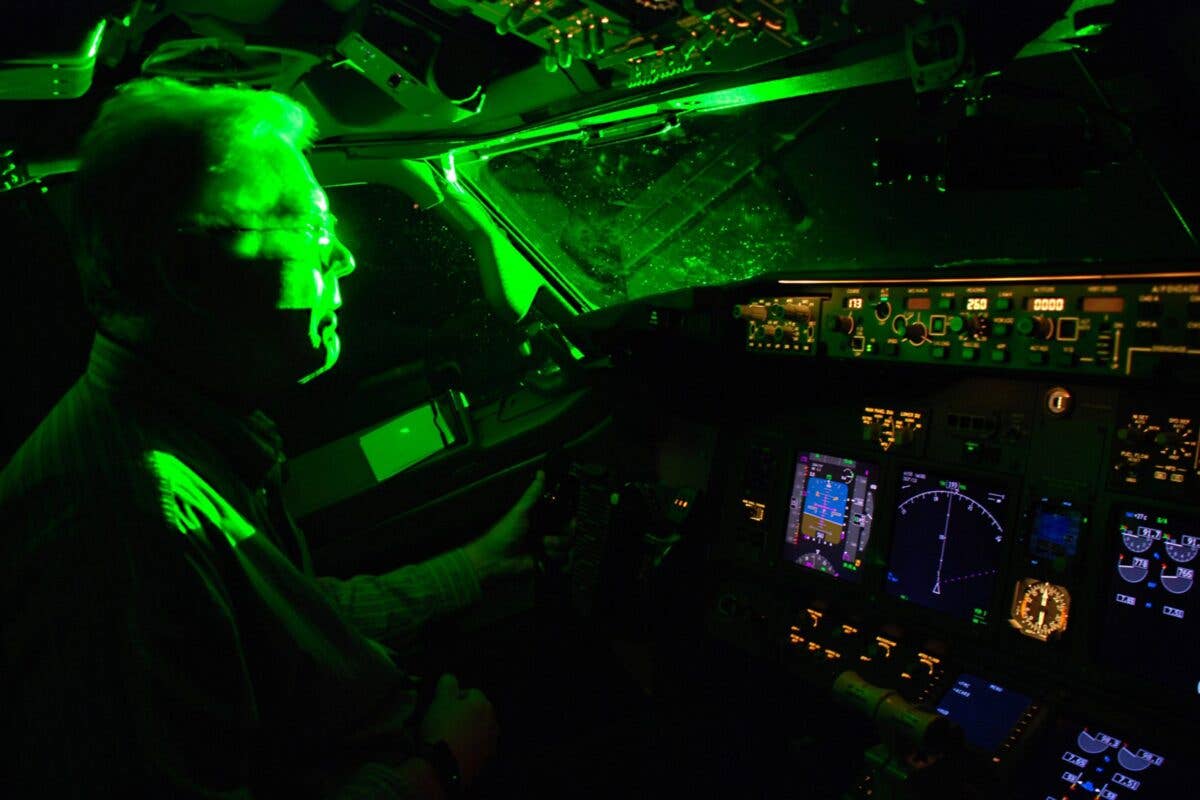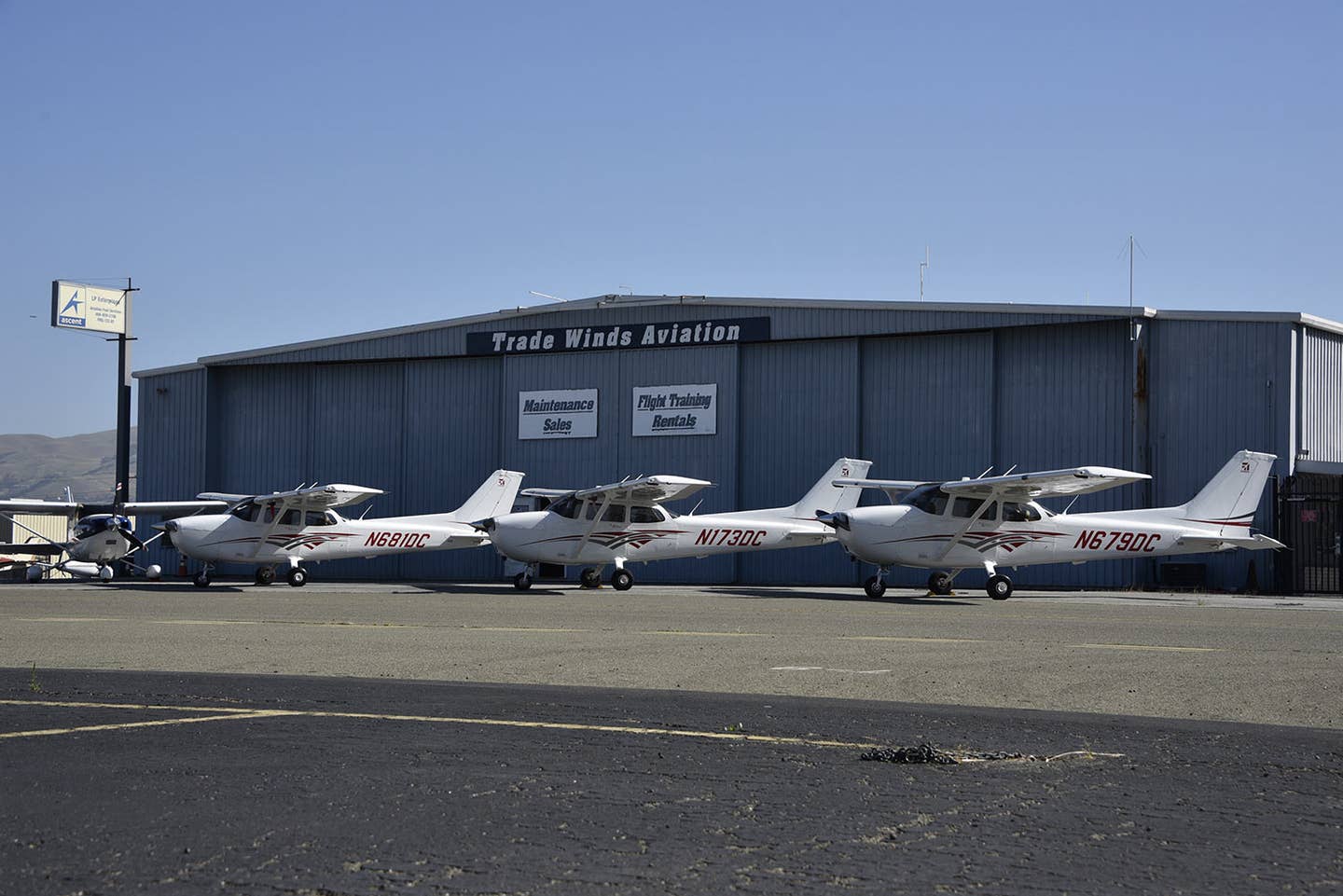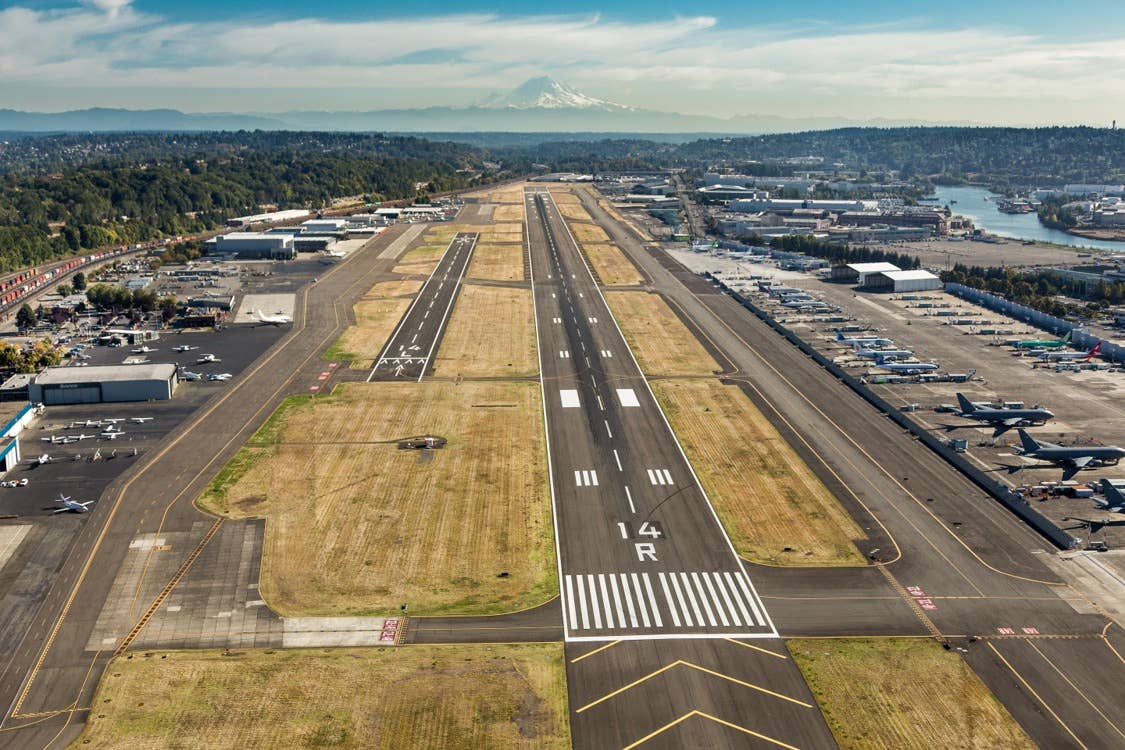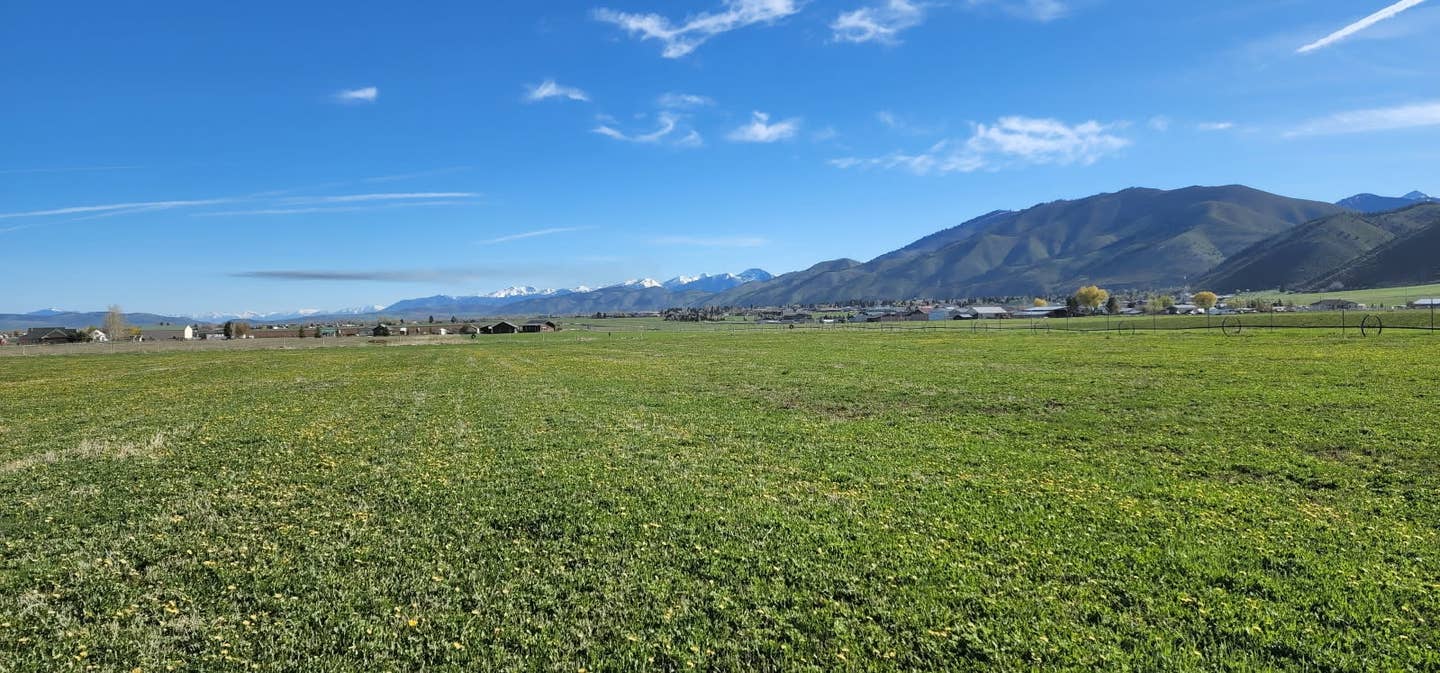Two Decades After Renaissance, Wichita Airpark Ready for New Ownership
The 47-acre Cook Airfield includes both paved and turf runways, a pilot lounge, and seven hangar buildings.
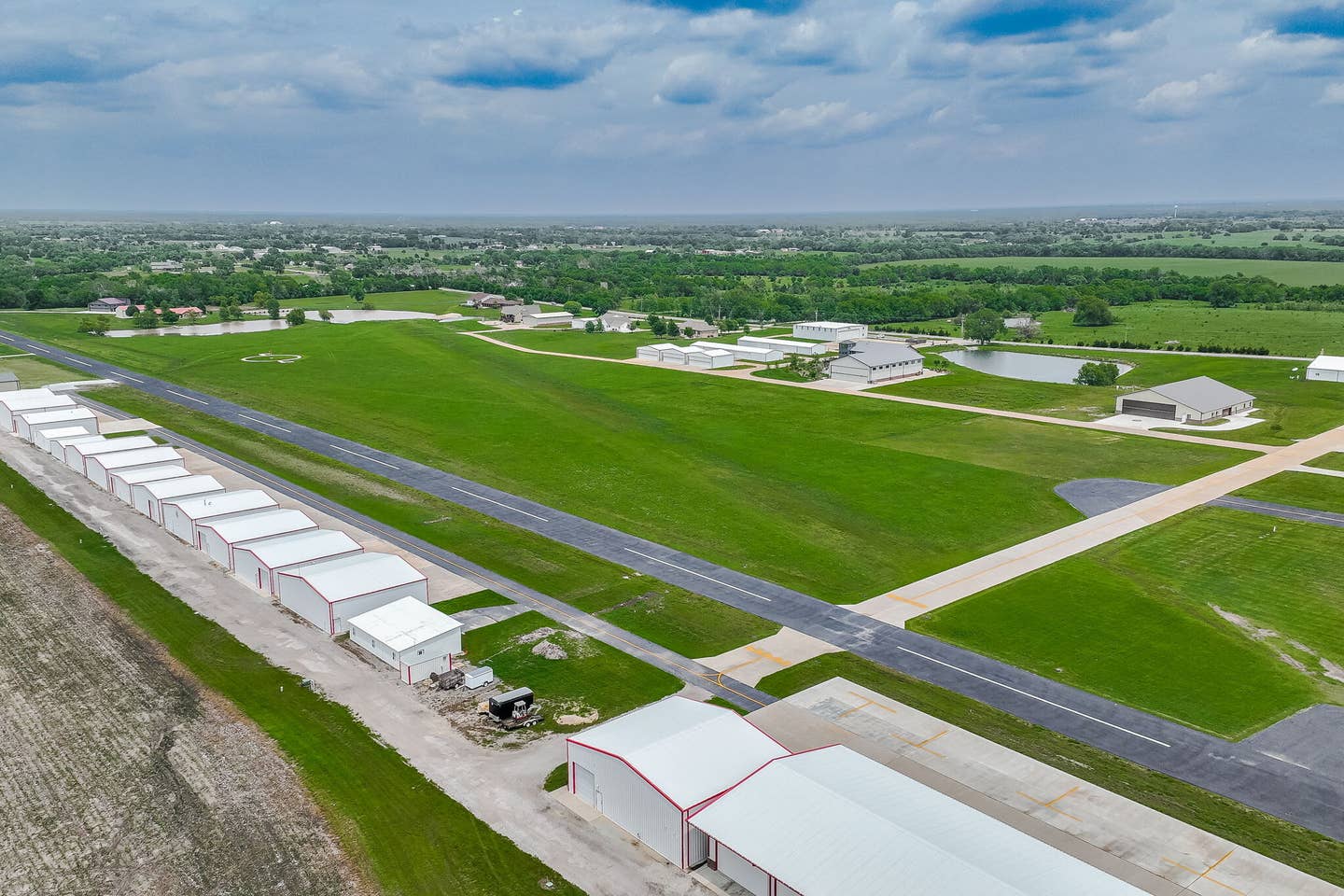
Cook Airfield (K50), near Wichita, Kansas, has a 3,472-foot-long-by-40-foot-wide paved and lighted runway, as well as a 1,600-foot-long-by-50-foot-wide turf landing strip. [Courtesy: Erbert Financial, Darrin Erbert]
Wichita, Kansas, is flanked by four residential airparks. Those closest to the city’s center are Yoder Airpark (SN61) to the west, High Point Airport (3KS5) to the north, Stearman Field (1K1) to the northeast, and Cook Airfield (K50) to the southeast.
Cook Airfield was established in 1957 and once served as a reliever facility for Cessna to tie down planes waiting to be ferried around the nation. The decades that followed led the property away from aviation. At one point it was a site for motorcycle racing and the airport ultimately fell into disrepair.
The current ownership group, Crosswinds Aviation, as local aviators would testify, performed a complete 180 on the airport.
“I was keeping my plane here at the airport, and the rumor was that it was for sale. Once we tried to buy it, it was already under contract,” said Greg Thomas, Cook Airfield’s co-owner. “Then 9/11 happened, the contract fell through, and we started negotiating to purchase the airport. Two years later, we ended up buying Cook Airfield from the trust.”
Thomas knew it would be a significant challenge to get the airport to where he thought it should be. It took years of hard work to rechart the airport’s course.
“It was a complete junkyard when we got it,” Cook said. “You could only land on the east 20 feet of the runway, because the other side had too many potholes in it. And we probably tore down more hangars than we kept.”
Since its new life beginning in 2003, the airport has benefited from several Kansas Airport Improvement Program (KAIP) state grants issued from the Kansas Department of Transportation to improve its facilities. This work has included the lengthening of the primary runway, which required the closure and relocation of a county-owned road.
Cook Airfield Today
Today, Runway 17/35 is a 3,472-foot-long-by-40-foot-wide paved and lighted surface. There is also a 1,600-foot-long-by-50-foot-wide turf runway. Cook Airfield airport has more than 100 based aircraft, more than 60 hangars, and publicly available 100LL fuel. Jet-A fuel is expected to be available in the near future.
Thomas built a hangar home at the airport in 2007, and since then roughly 20 additional hangar homes have been constructed at Cook Airfield. Having residences with taxiway access was always in the plans.
“After we purchased the airport, our goal was to subdivide the land into six lots, because the county told us they had to be 5 acres in size,” he said. “So, that’s what we did, to get the cash flow to help fix the airport up. Later on, we figured out that we could have 1-acre lots, as long as we were doing approved septic systems.”
The airpark subdivision is now in its second phase, with five lots still available at the south end of the property. Land continues to be allocated for additional box hangar construction.
“We seem to sell our hangars as fast as we can put them up,” he said. “In fact, the last one I just sold to a guy in Ireland. We have two new hangars that will be completed soon, and then we are getting ready to order two more. Most of the hangars we build are on leased ground.”
In addition to homes, commercial hangars, a pilot’s lounge, and several businesses are based at the airport. Air Capital Drop Zone, a skydiving operation, and Compass Rose Aviation, a flying club, have both been there for more than 10 years.
After 21 years of owning Cook Airfield, Thomas and business partner Steve Logue are ready to pass the baton to the next owner.
“The airport has been for sale and under contract a couple of times, but has fallen through each time,” Thomas said. “We are both ready to move on to other things and let somebody else take Cook Airfield to the next level. There is a lot of potential here, and each potential buyer has their own vision for the airport. They could extend the runway or build a new runway to the west. [With additional infrastructure], they could add a restaurant if they wanted to, which is what the last buyer was going to do—alongside a hotel.”
Cook Airfield is approximately a 23-minute drive from downtown Wichita and 26 minutes from the city’s commercial service airport, Wichita Dwight D. Eisenhower National Airport (KICT). The purchase of the 47-acre property includes the runway with PAPI system, pilot’s lounge, and seven buildings/hangars that total 32,906 square feet.

Sign-up for newsletters & special offers!
Get the latest FLYING stories & special offers delivered directly to your inbox

